Abstract
Haemorrhagic fever with renal syndrome (HFRS) is a public health problem throughout most of the European and Asian land mass. Although predominantly associated with rural areas, it is now being recognized as an urban problem in some countries, and also presents a particular hazard to laboratory staff who use rodents for biomedical research. In wild rodents (rats, mice and voles) the infection is asymptomatic. Human infection with the HFRS agent(s) is sporadic, but under special circumstances epidemics occur; the infection may be completely silent, or associated with mild or severe disease. Severe cases are usually seen in the Far East. The epidemiological features of the disease vary from country to country and depend upon a variety of factors, the elucidation of which requires a multidisciplinary approach. The recently discovered Hantaan virus is the etiologic agent of HFRS in Asia. It is now possible to detect Hantaan virus antigen by immunofluorescence using either infected mouse lung or infected human cells as substrate. Prevention measures to date have concentrated on rodent control; the role played by the ectoparasites of rodents, if any, has still to be elucidated. Antigens have been detected in rodents captured in HFRS-endemic areas in China, Finland, Japan, Sweden, and the Soviet Union. None of these have been cultured as yet, but preliminary results with the Puumala agent detected in Finland indicate a relationship with the Hantaan virus. Sera collected from Scandinavian patients react to a high titre with both Puumala and Hantaan agents, whereas sera collected from patients in East Asia have much higher titres against the homologous antigen. Surveillance is very important and further research on the virus is needed, especially to identify the virus in the West and to determine strain differences.
Full text
PDF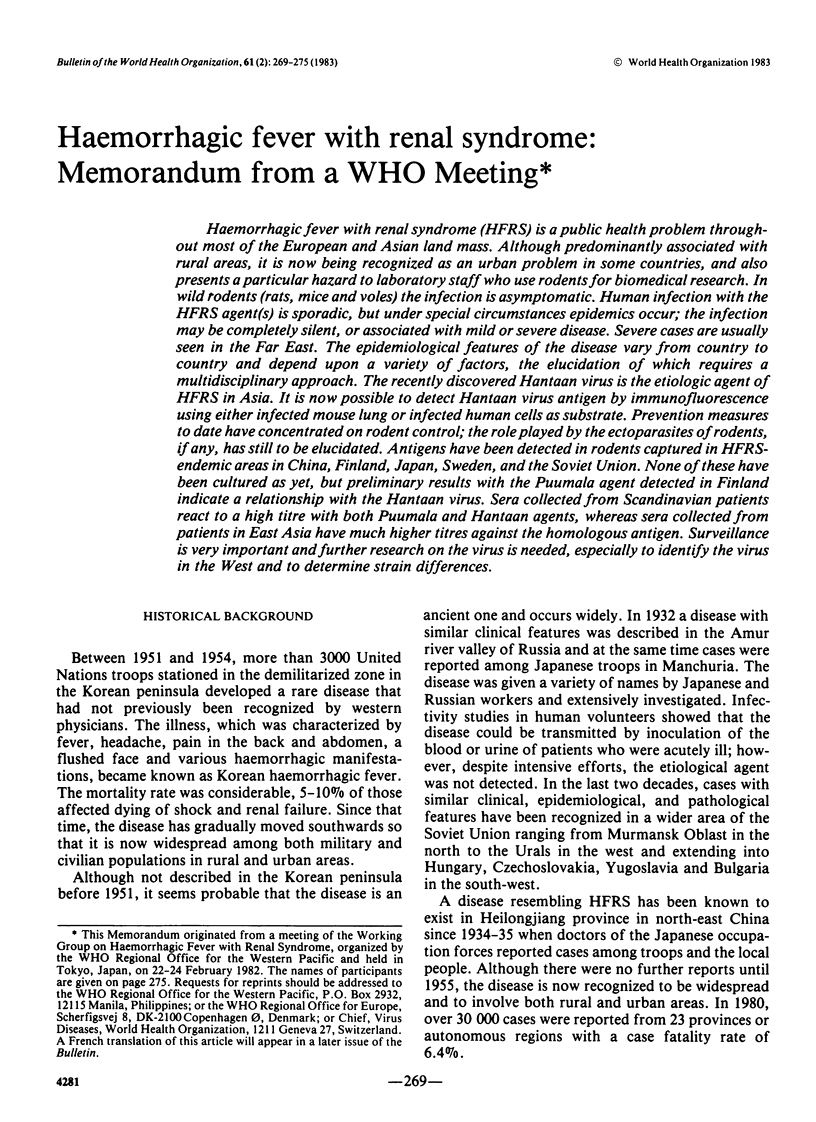
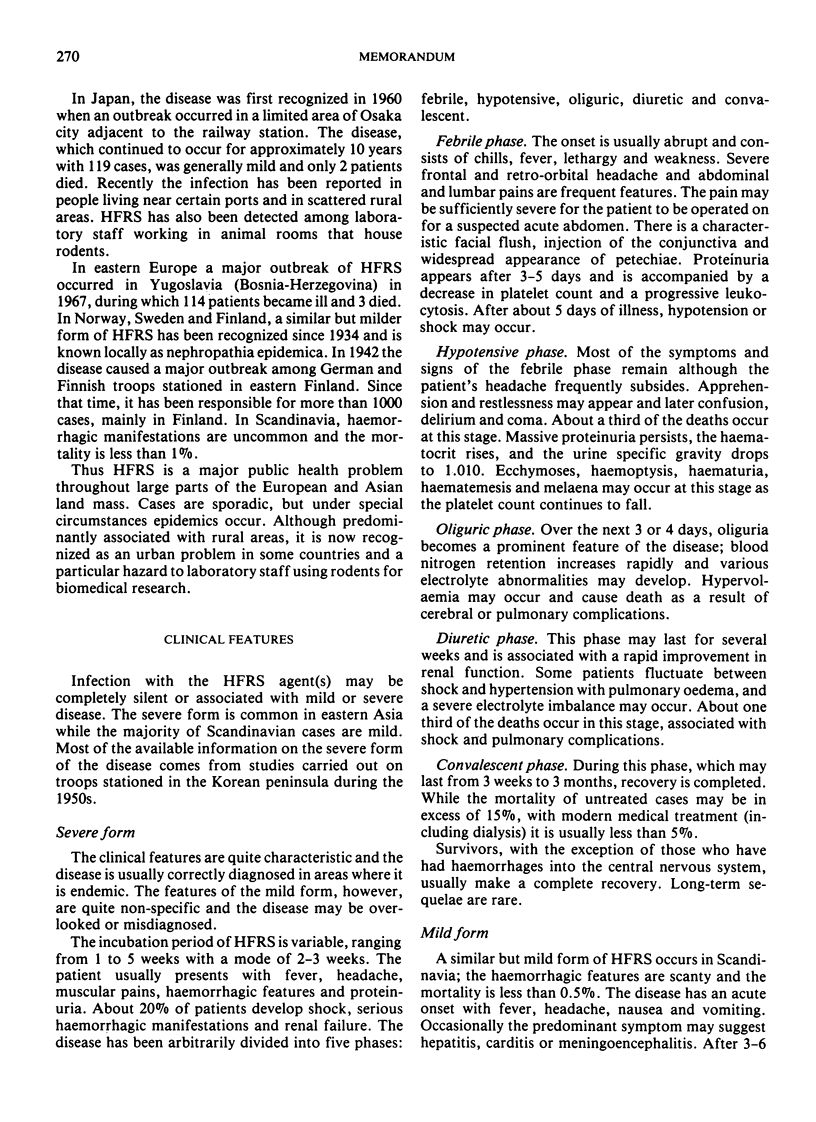
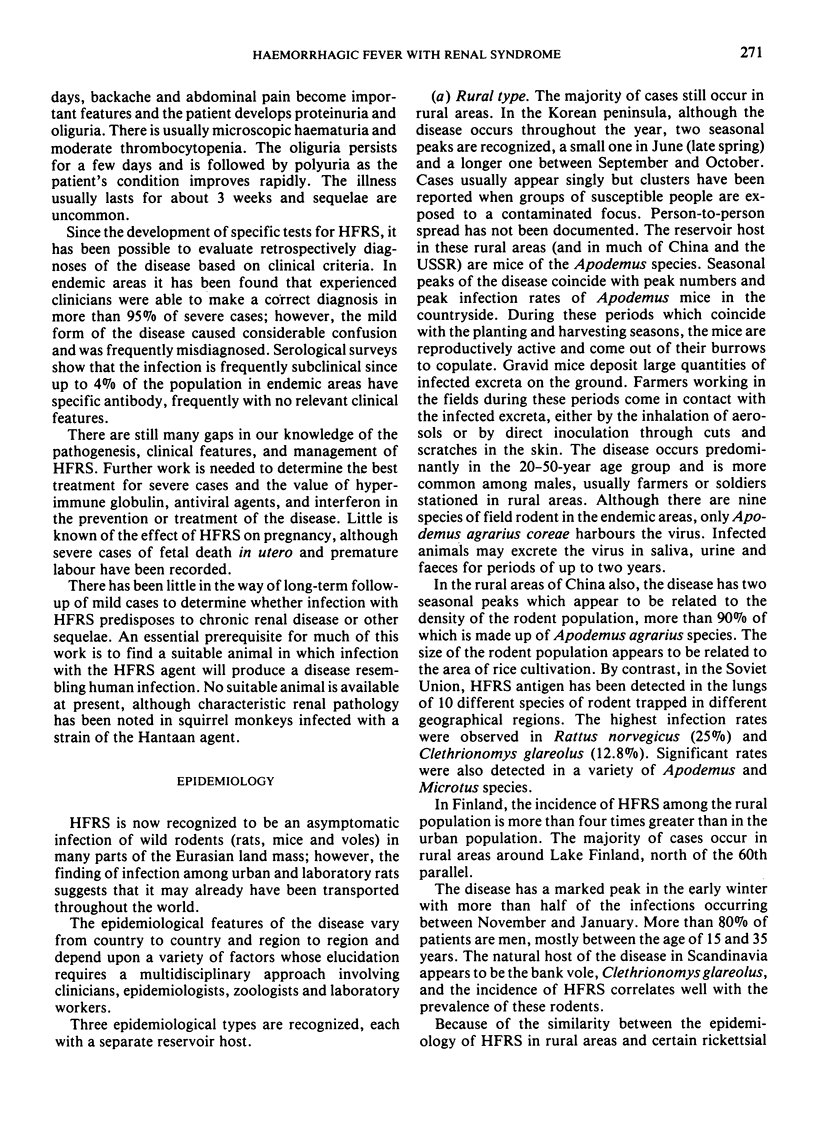
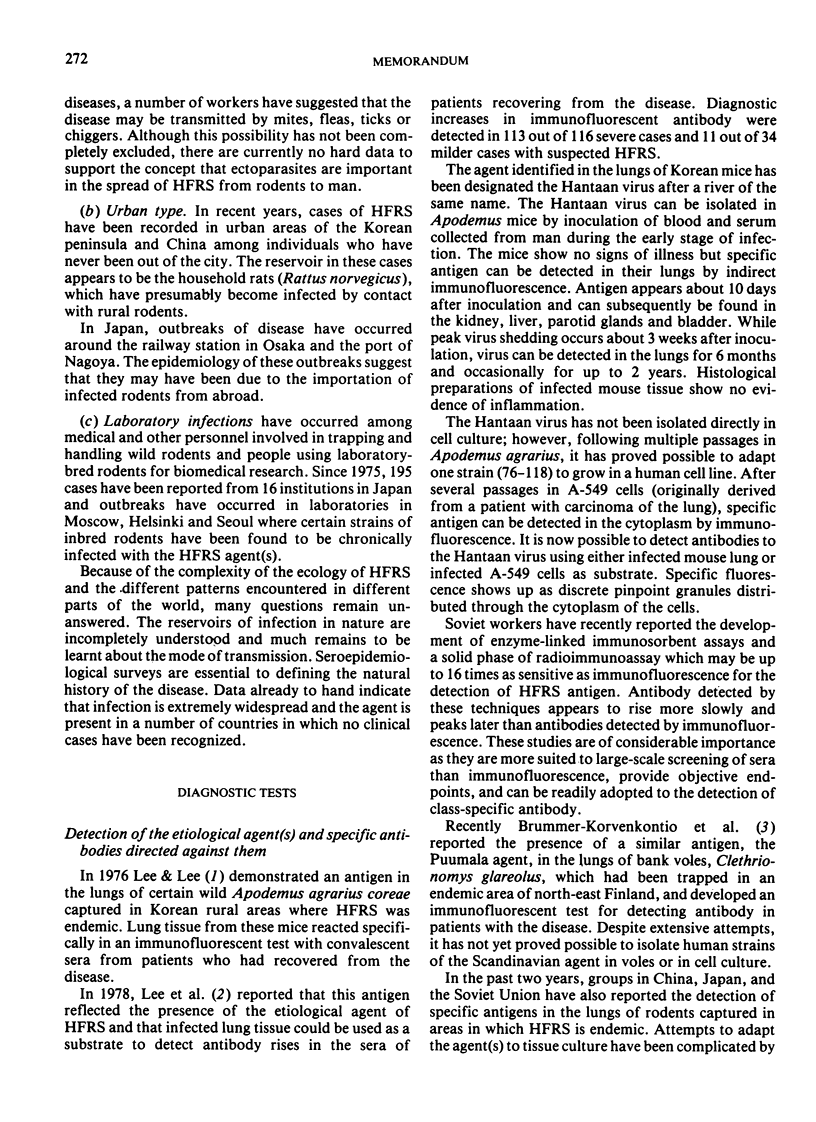

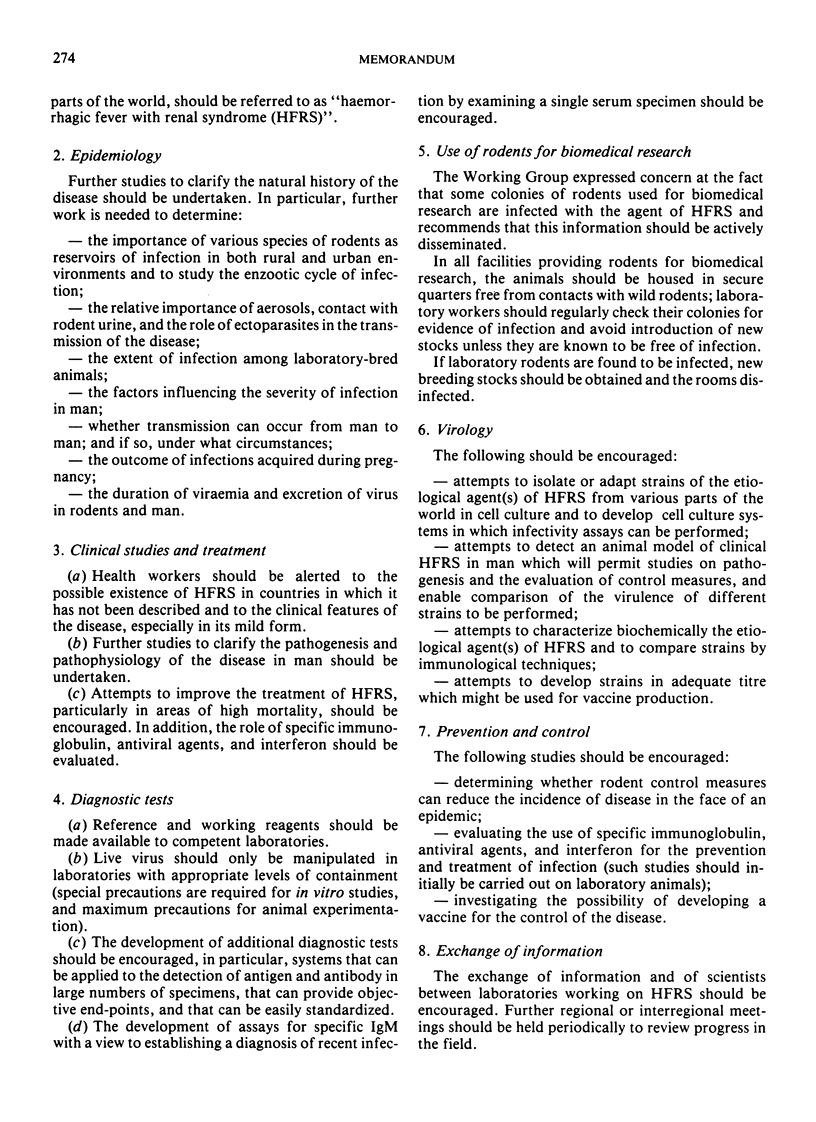
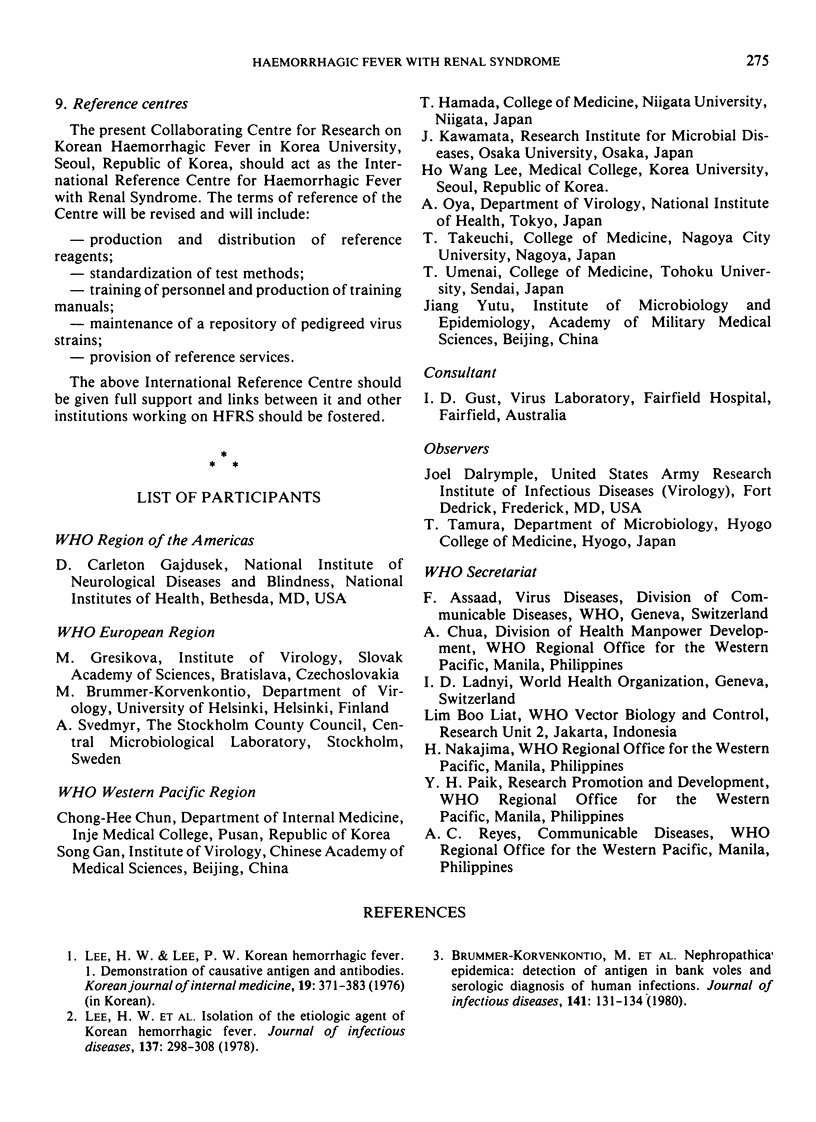
Selected References
These references are in PubMed. This may not be the complete list of references from this article.
- Brummer-Korvenkontio M., Vaheri A., Hovi T., von Bonsdorff C. H., Vuorimies J., Manni T., Penttinen K., Oker-Blom N., Lähdevirta J. Nephropathia epidemica: detection of antigen in bank voles and serologic diagnosis of human infection. J Infect Dis. 1980 Feb;141(2):131–134. doi: 10.1093/infdis/141.2.131. [DOI] [PubMed] [Google Scholar]


